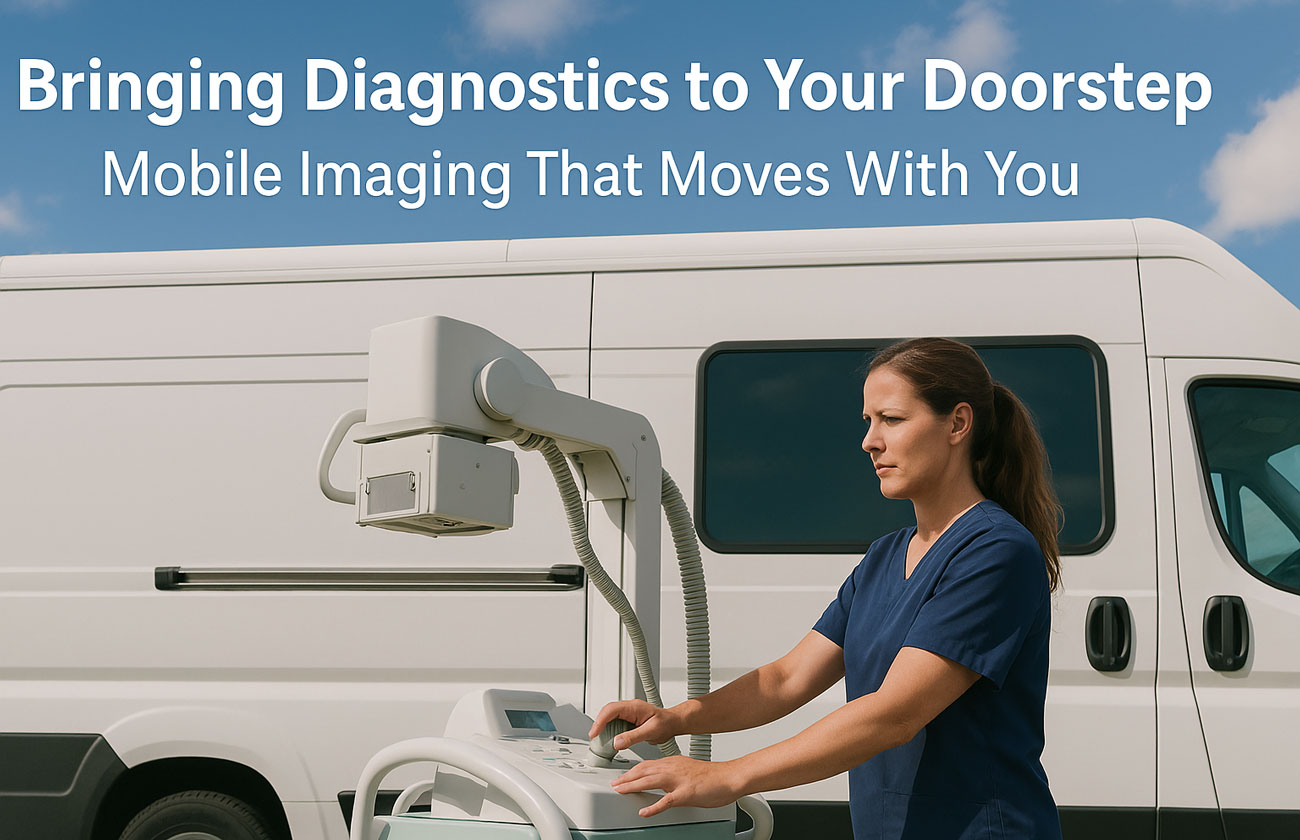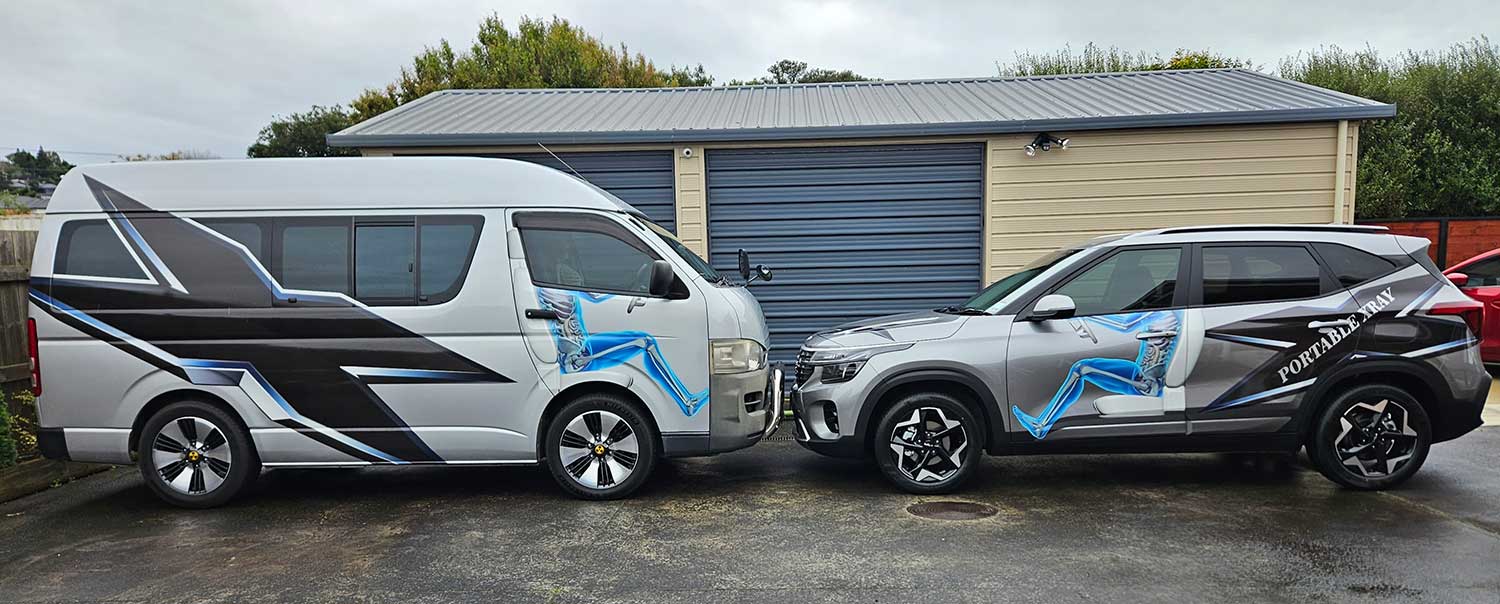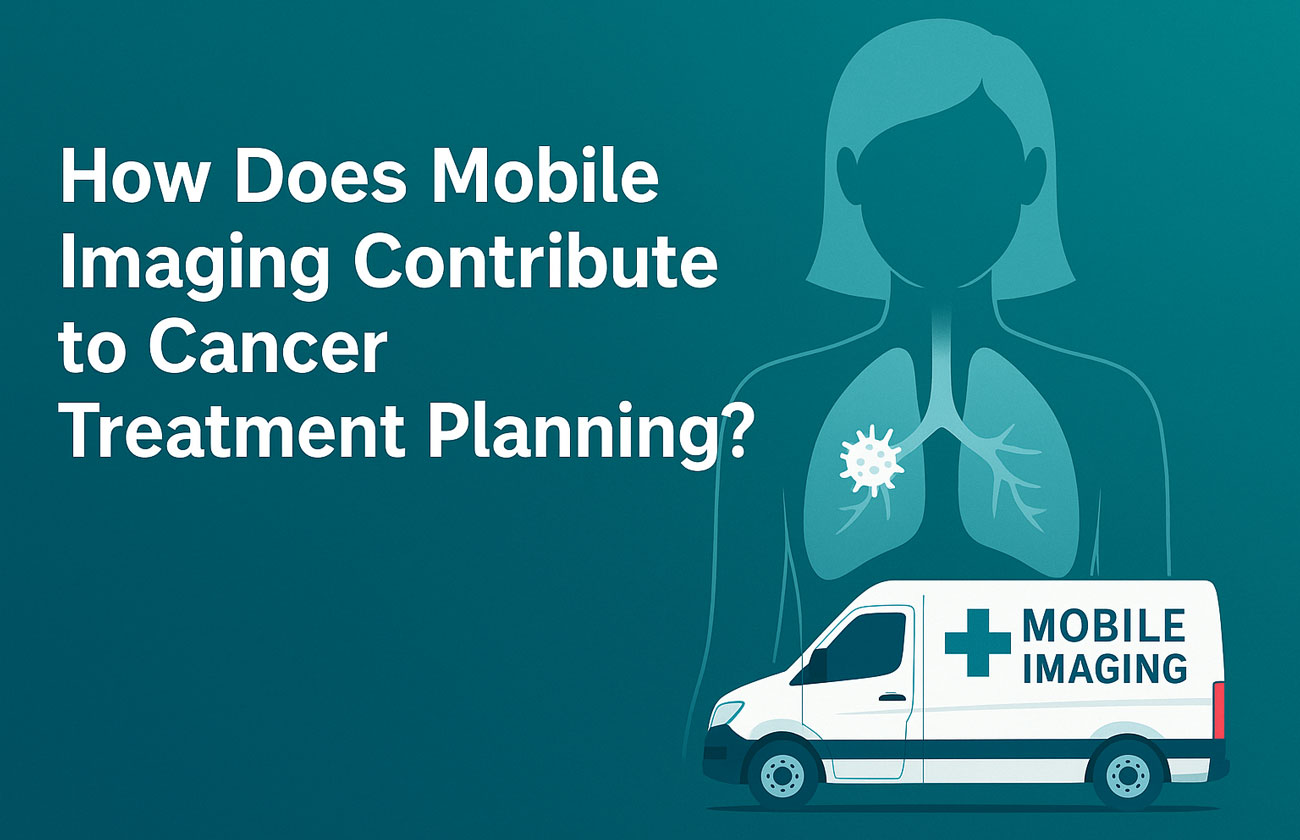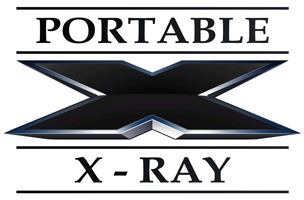
21 Oct Bringing Diagnostics to Your Doorstep: Mobile Imaging That Moves With You
Mobile Imaging Services: Advanced Diagnostic Reporting Without the Travel
Mobile imaging is transforming the way diagnostic services are delivered across New Zealand. By bringing portable x-ray services and other advanced medical imaging directly to patients, these mobile units eliminate the need for hospital travel and long clinic wait times. Designed to reach individuals in rest homes, private residences, or rural communities, mobile imaging offers an efficient solution for those who may struggle with transport due to illness, disability, or advanced age. With diagnostic imaging services now available closer to home, healthcare providers can offer more inclusive care that adapts to each patient’s needs.
These fully equipped mobile units use state-of-the-art x-ray and scanning technology to capture precise diagnostic information on-site. The images are then transmitted securely to radiologists for immediate interpretation, enabling faster clinical decisions and more effective treatment planning. Mobile imaging’s service supports ongoing care for cancer patients, individuals undergoing treatment for neuroendocrine tumours, or those in need of regular monitoring. By providing reliable, high-quality diagnostics through a mobile platform, this solution minimises delays, streamlines workflows, and supports comprehensive care without sacrificing quality. Mobile imaging is making it possible to access advanced diagnostics through a mobile unit—improving health outcomes while keeping patients comfortable and closer to home.
What is Mobile Imaging and How Does it Work?
Understanding Mobile Imaging Services
Mobile imaging services offer a practical and patient-centred solution for delivering advanced diagnostic imaging directly to locations where individuals live or receive care. These services utilise fully equipped mobile units designed to perform diagnostic procedures such as x-rays and scans outside of traditional medical facilities. From rest homes to remote rural settings, mobile imaging provides broader access to high-quality diagnostic tools without the need for extensive travel or hospital admission. As demand grows for healthcare that is both efficient and accessible, mobile imaging continues to emerge as a vital resource in modern medical care.
This approach is especially beneficial for patients facing mobility challenges, those receiving palliative care, or individuals managing long-term illnesses like cancer or neuroendocrine tumours. Mobile imaging brings services closer to home, helping reduce delays in diagnosis and treatment planning. By combining convenience with professional radiology standards, it enables clinicians to access timely diagnostic information for faster clinical decision-making. It is one of the most effective ways to extend medical imaging across New Zealand communities where travelling to a facility might otherwise be a significant barrier.
How Does a Mobile Imaging Unit Operate?
A mobile imaging unit is a specialised diagnostic facility on wheels—typically a customised vehicle or trailer—outfitted with advanced imaging technology. These units are designed to function as mobile extensions of a radiology department, featuring portable x-ray systems, shielding, digital workstations, and real-time communication tools for image transfer to off-site radiologists. They are staffed by trained technologists or radiographers who perform the imaging procedures with the same precision and care found in fixed-site settings.
Operating seamlessly across a range of care environments, the unit is brought directly to the patient’s home or a local medical facility. Once on-site, the equipment is set up efficiently, ensuring minimal disruption and maximum comfort for the patient. Images captured are processed using digital imaging systems and then securely transmitted to a radiologist for interpretation. This streamlined workflow helps eliminate the need for patients to travel long distances, especially when dealing with illnesses where rest and reduced movement are essential. By maintaining high standards in imaging quality and safety, mobile imaging units serve as a fully functional, transportable solution for delivering advanced diagnostics where they’re most needed.
Benefits of Mobile Imaging for Patients
For patients, the benefits of mobile imaging services go far beyond convenience. Receiving diagnostic imaging in a familiar setting—such as their home, a rest home, or an assisted living facility—can significantly enhance comfort, reduce anxiety, and speed up the overall healthcare journey. This is especially relevant for elderly individuals, those recovering from surgery, or people undergoing cancer treatment who may find it physically demanding to attend appointments at a hospital. Mobile imaging’s service reduces stress while maintaining access to precise imaging and timely diagnosis.
Equally important, mobile imaging minimises waiting times and improves the continuity of care. Instead of scheduling transport, managing support staff, and risking delays, patients can receive services directly at their location. This model supports a faster diagnosis-to-treatment timeline, which is critical for conditions where early intervention is key. Whether used for routine checks or as part of an advanced treatment plan, mobile imaging brings essential diagnostic tools directly to the patient—improving outcomes and removing logistical hurdles that have traditionally limited access to medical imaging.
What Types of Diagnostic Scans are Available Through Mobile Services?
Common X-ray Services Offered
Mobile imaging services provide a wide range of diagnostic x-ray scans that are crucial for identifying and monitoring a variety of medical conditions. The most common include chest x-rays, used to evaluate lung infections, heart conditions, or fluid around the lungs; abdominal x-rays, which help detect obstructions or abnormalities in the gastrointestinal tract; and musculoskeletal x-rays, used to assess fractures, joint issues, or arthritis. These scans are conducted using portable x-ray units that can be safely and efficiently deployed within a patient’s home or care facility, eliminating the need for hospital transport and long wait times.
Beyond routine assessments, mobile x-ray services also support diagnostic needs in care homes and assisted living communities where residents may have limited mobility. This approach ensures that essential diagnostic services are delivered directly to patients, enhancing both access and comfort. The portability of the equipment means skilled professionals can perform accurate, high-quality imaging without compromising safety or clinical standards, particularly important in rest homes, retirement villages, and community-based care settings.
Advanced Imaging Options for Cancer Diagnosis
Mobile imaging has evolved to include advanced diagnostic options that support early detection and treatment planning for cancer. These services include high-quality x-ray scans used to identify tumours, track disease progression, or evaluate responses to ongoing treatment. Advanced imaging capabilities contribute to the diagnosis of conditions such as neuroendocrine tumours and other complex cancers, delivering precise imaging that supports radiologists in creating tailored treatment strategies. Accessing this level of imaging often required travel to major hospitals, which can now be avoided thanks to mobile imaging units.
Designed and built as fully equipped diagnostic solutions, these mobile units bring imaging closer to home. Patients who may be too unwell to travel benefit from imaging services delivered directly to their residence or healthcare facility. This is particularly valuable in supporting treatment for vulnerable or immunocompromised individuals. Mobile imaging is making comprehensive cancer diagnostics more accessible, offering imaging services across Auckland that meet the same quality standards as traditional hospital-based radiology departments.
What to Expect During a Portable X-ray Service
During a portable x-ray appointment, a trained radiographer arrives at the patient’s home, assisted living facility, or care centre with a mobile x-ray unit. The equipment is compact, yet powerful enough to deliver precise diagnostic imaging. The technologist sets up the unit in a suitable space, ensuring patient comfort and safety while positioning the x-ray machine for optimal results. The process is non-invasive and typically takes only a few minutes, after which the images are transmitted to a radiologist for interpretation.
Patients can expect a smooth and professional experience, with minimal disruption to their environment or routine. Since the equipment is designed to be used in varied settings, from living rooms to bedside environments, it eliminates the stress associated with hospital visits. Mobile imaging’s service ensures high-quality diagnostic imaging without delay, streamlining the path to faster clinical decisions. It’s a safe and efficient alternative for those experiencing ill health, offering vital scans while remaining closer to home.

How Can Mobile Imaging Improve Access to Healthcare in Auckland?
Mobile Imaging Brings Services Closer to Home
Mobile imaging is transforming the way diagnostic services are delivered by bringing essential healthcare directly to patients. For individuals who may be unable to travel due to ill health, mobility limitations, or lack of transport, having access to mobile imaging services at home or in residential care facilities offers a vital lifeline. Portable x-ray services and other mobile diagnostics can be carried out in familiar environments, reducing stress and helping patients receive the same high-quality care they would in a traditional clinical setting.
This shift is not just about convenience—it’s about access. Mobile imaging’s service delivery model enables communities across New Zealand to receive advanced diagnostics without the need for long journeys. Imaging closer to home means fewer delays in diagnosis and faster treatment planning. From routine x-rays to scans for complex conditions like cancer or neuroendocrine tumours, the ability to access mobile diagnostics where it’s needed most is a major step towards more equitable healthcare.
Addressing Healthcare Disparities with Mobile Units
In many communities, especially those with ageing populations or limited healthcare infrastructure, there remains a gap in access to diagnostic services. Mobile imaging units help bridge this divide by delivering services directly to rest homes, retirement villages, and assisted living communities. By using a fully equipped diagnostic unit designed to function like a conventional radiology facility, mobile imaging is making it easier for under-served populations to receive the scans they need.
These mobile solutions also play a role in reducing delays caused by overloaded hospital systems. With quicker access to medical imaging, clinicians can make more timely decisions, improving outcomes for patients. Whether it’s supporting early cancer diagnosis or monitoring chronic conditions, mobile diagnostics are helping ensure that quality healthcare is not restricted by geography or mobility. This is particularly important in areas where imaging often required long journeys in the past.
How Mobile Imaging Supports Community Health in Auckland
Improving community health begins with timely, accurate diagnoses. Mobile imaging brings the tools and expertise needed for early detection and treatment into the heart of communities. This approach not only supports patients but also lightens the load on primary care clinics and hospitals by decentralising diagnostic imaging. With mobile x-ray and advanced imaging services available where people live, the entire healthcare system operates more efficiently.
Mobile imaging’s impact extends beyond individual patients—it strengthens the fabric of community health. By making services more accessible, it contributes to better health outcomes and a higher standard of care for vulnerable populations. Whether it’s a patient in a retirement village requiring a chest x-ray or a resident at home in need of follow-up cancer scans, access to mobile imaging units ensures diagnostic excellence reaches every corner of the region.
What are the Advantages of Using Mobile X-ray Services?
Convenience of At-Home Diagnostic Imaging
Mobile x-ray services provide a powerful solution for patients who require medical imaging without the inconvenience of travelling to a clinic or hospital. These services deliver fully equipped diagnostic units directly to a patient’s home or care facility, enabling high-quality scans in familiar surroundings. This approach reduces disruptions to daily routines and is particularly beneficial for elderly individuals or those recovering from surgery or chronic illness. Whether it’s a follow-up scan or an initial diagnostic x-ray, mobile imaging makes timely healthcare more accessible and less stressful.
By bringing diagnostic imaging closer to home, mobile services minimise exposure to crowded healthcare environments, which is especially relevant for patients with compromised immunity. The ability to access essential x-ray scans without transport or waiting room delays supports faster clinical decisions and improves the continuity of care. For those living in remote areas or in assisted living communities, this level of access was once difficult to achieve without long journeys or hospital stays. Now, mobile imaging is making healthcare delivery far more flexible and responsive to patient needs.
Cost-Effectiveness of Portable X-ray Services
Mobile imaging services offer a cost-effective alternative to traditional diagnostic pathways. Avoiding hospital admissions or outpatient transport reduces both direct medical costs and associated logistical expenses. When a portable x-ray service is deployed at a rest home, assisted living facility, or private residence, the healthcare provider avoids booking radiology suite time and transport arrangements, all while maintaining diagnostic accuracy. These efficiencies translate into measurable savings for both healthcare systems and families managing long-term care.
Patients also benefit from reduced ancillary costs—such as time off work, caregiver assistance, or fuel and parking—often associated with hospital visits. By using advanced portable x-ray equipment, mobile imaging units deliver fast and reliable diagnostics without compromising quality. This streamlined approach is especially valuable for community health providers who manage a high volume of patients with mobility issues. As mobile imaging brings services closer to patients, the financial and practical barriers to accessing diagnostics are significantly lowered.
Mobile Imaging for Patients with Limited Mobility
For individuals with limited mobility, travelling to medical imaging centres can be both physically and emotionally taxing. Mobile x-ray services eliminate these challenges by offering high-quality diagnostic imaging at home or in residential care settings. This solution is ideal for patients with neurodegenerative conditions, disabilities, or those recovering from acute injuries. The convenience of on-site imaging supports comfort, safety, and compliance with treatment plans that require frequent scans or monitoring.
Using a mobile imaging unit equipped with advanced technology, radiographers can perform chest, limb, and skeletal x-rays with minimal patient movement. The presence of a trained technologist ensures each scan is carried out efficiently and safely. Diagnostic information is then reviewed remotely by a radiologist, enabling precise treatment planning without delay. For vulnerable populations across New Zealand, mobile imaging is bringing comprehensive care within reach, helping to close the gap between health services and those most in need of diagnostic support.

How Does Mobile Imaging Contribute to Cancer Treatment Planning?
Importance of Diagnostic Imaging in Cancer Care
Diagnostic imaging plays an essential role in every stage of cancer care — from early detection and diagnosis to treatment monitoring and recovery planning. Using advanced medical imaging techniques such as portable x‑ray services and mobile diagnostics, healthcare professionals can obtain detailed internal views of the body, allowing radiologists to identify tumours and track their progression with precision. This imaging procedure that uses state‑of‑the‑art equipment provides diagnostic information critical for tailoring treatment to each patient’s unique needs.
High‑quality imaging closer to home not only accelerates diagnosis but also minimises the physical strain of travelling to hospitals, particularly for patients undergoing chemotherapy or radiotherapy. By offering access to advanced diagnostic services directly within local communities, mobile imaging brings a level of care once limited to hospital settings. It ensures timely scans and rapid data sharing between radiologists and oncologists, contributing to better treatment outcomes and improved patient comfort.
Mobile Imaging’s Role in Neuroendocrine Tumours
Neuroendocrine tumours often require precise imaging for accurate diagnosis and ongoing monitoring. These complex cancers can develop in multiple areas of the body, making detailed and repeatable scans vital for effective treatment planning. Mobile imaging’s service provides diagnostic accuracy through high‑resolution x‑ray and imaging systems designed to detect even subtle changes in tumour growth or treatment response. Such technology enables radiologists to identify disease progression early, supporting clinicians in making evidence‑based decisions.
By bringing diagnostic imaging closer to home, mobile units help patients with neuroendocrine conditions maintain their treatment schedules without unnecessary travel. Many individuals living with long‑term cancers find frequent hospital visits physically demanding; mobile imaging offers an alternative that prioritises both efficiency and comfort. With imaging services delivered directly to care facilities or private residences, mobile diagnostics ensures continuity of care while maintaining the high standards of accuracy expected in modern oncology.
Integrating Mobile Imaging into Comprehensive Care
Modern cancer treatment depends on collaboration between multidisciplinary teams, where timely diagnostic information is essential. Mobile imaging is bringing comprehensive care to patients by integrating seamlessly into broader oncology networks. Radiographers, radiologists, and specialists can access diagnostic data remotely, streamlining treatment planning and follow‑up care. This approach reduces waiting times for results and supports faster clinical decisions — a crucial advantage when dealing with fast‑progressing or aggressive forms of cancer.
Mobile imaging units, designed and built to deliver hospital‑grade diagnostic imaging, enable healthcare providers to coordinate across departments and regions. This integration supports the delivery of advanced diagnostics through a mobile framework that reaches patients who might otherwise face delays in care. Whether used for initial cancer screening, ongoing monitoring, or evaluating the effectiveness of therapies, mobile imaging strengthens the entire continuum of treatment, ensuring patients receive precise imaging and comprehensive medical support wherever they are.
Who Can Benefit from Mobile Imaging Services?
Patients Requiring Frequent Scans
For patients who need ongoing monitoring and regular scans, mobile imaging offers a practical and compassionate solution. Individuals undergoing treatment for chronic conditions such as cancer or recovering from serious injuries can benefit greatly from having diagnostic imaging performed in the comfort of their own home or care facility. Mobile x‑ray units and portable imaging systems bring advanced diagnostics directly to patients, eliminating the stress and effort associated with hospital travel. This is especially valuable for those whose health conditions limit their mobility or for whom exposure to busy healthcare environments may pose risks.
Mobile imaging brings high‑quality diagnostic services closer to home while maintaining the same precision as traditional radiology departments. The ability to receive timely scans allows doctors and radiologists to make faster clinical decisions and adjust treatment plans without delay. For many, this access to advanced medical imaging represents a vital part of ongoing care, ensuring consistent monitoring without disrupting recovery routines or quality of life.
Healthcare Providers Utilising Mobile Imaging
Healthcare providers across New Zealand are increasingly turning to mobile imaging services to improve patient outcomes and streamline operations. Hospitals, clinics, and aged‑care facilities can access on‑site diagnostic imaging through fully equipped mobile units designed to integrate seamlessly with existing healthcare systems. These mobile services deliver precise imaging for x‑ray scans and diagnostics, supporting faster turnaround times and reducing the pressure on central radiology departments. For clinicians, the convenience of having diagnostic data available quickly allows for more accurate treatment planning and efficient case management.
By collaborating with mobile imaging specialists, healthcare providers can extend their reach into the community and offer comprehensive care to patients who may otherwise experience delays in diagnosis. This model enhances clinical flexibility and reduces patient transfer requirements, ensuring advanced diagnostics through a mobile solution that complements in‑house medical imaging. For healthcare professionals, it represents a practical and cost‑effective way to maintain high standards of care while expanding diagnostic capacity.
Educational Institutions and Mobile Imaging Opportunities
Educational institutions with medical and radiography programmes also benefit from mobile imaging technology. Access to mobile imaging units allows students and trainee radiographers to gain hands‑on experience with advanced diagnostic equipment in diverse environments. These opportunities help bridge the gap between classroom learning and real‑world application, familiarising students with the latest mobile imaging systems used across hospitals and community healthcare facilities. Understanding how mobile x‑ray and portable diagnostic units operate is essential for those pursuing careers in radiology, nursing, or medical imaging technology.
This approach also provides valuable insights into how mobile imaging supports public health across New Zealand. By observing imaging services delivered directly to patients in care facilities or home settings, students can better appreciate the role of innovation in improving healthcare accessibility. Exposure to mobile imaging’s service design — from fully equipped diagnostic units to on‑site safety protocols — ensures future professionals are well‑prepared to work in both hospital and community‑based healthcare environments, where flexibility and precision are equally vital.
Conclusion
Mobile imaging is transforming the delivery of diagnostic services across New Zealand, offering faster, safer, and more convenient access to essential scans. From x-ray units to advanced imaging for cancer treatment planning, these mobile services bring comprehensive care directly to those who need it most. Whether in rural areas or major urban centres, the availability of portable x-ray services and mobile diagnostic units is eliminating the need for unnecessary hospital travel—especially for patients with limited mobility or chronic conditions.
With mobile imaging’s service delivering high-quality scans closer to home, patients gain access to advanced diagnostics without delay. This level of care supports treatment planning for conditions such as neuroendocrine tumours and allows healthcare providers to make faster, more accurate decisions. If you’re looking to streamline diagnostic processes and improve patient comfort, consider the benefits of using Portable X-Ray Services, a solution designed and built for today’s healthcare needs.
